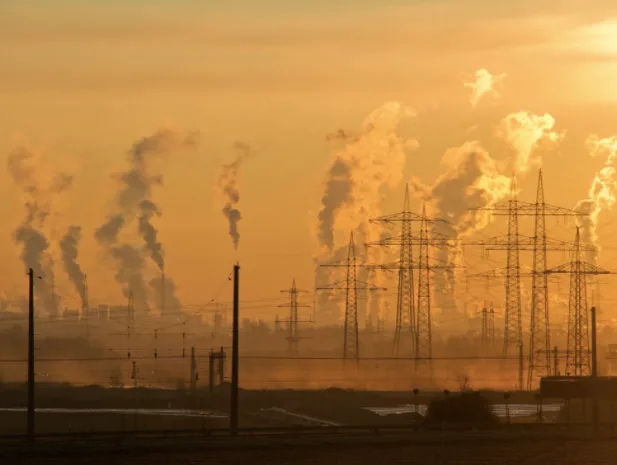
Air pollution falls nearly 40% in some Canadian cities amid COVID-19 lockdowns
Doctors say that lower pollution levels will likely lead to fewer hospital admissions from patients susceptible to heart attacks and asthma.
Some of the most polluted cities in Canada have seen dramatic improvements in air quality since social distancing regulations were implemented to slow the spread of COVID-19.
Chris McLinden and Deobra Griffin are scientists in the air quality research division at Environment and Climate Change Canada and have monitored the changing levels of pollution by using satellite sensors to track the presence of pollutants such as ozone, carbon monoxide and nitrogen dioxide.
The levels of these pollutants began dropping mid-March when many provinces implemented work from home policies and stay at home orders. McLinden and Griffin say that the decline in nitrogen dioxide, a compound released when fossil fuels are combusted in vehicles and buildings, is particularly pronounced and is likely related to fewer motorists commuting to work as well as office and factory closures.
Nitrogen dioxide has a shorter atmospheric lifetime than other compounds, such as carbon dioxide, and it does not travel far from the emission source. This makes it easy for satellites to track and measure the day-to-day changes of nitrogen dioxide levels.
Toronto and Montreal saw nitrogen dioxide levels fall by more than 30 per cent during the latter half of spring, which McLinden says was caused by fewer drivers and factories closing or slowing production. According to the traffic analysis firm Inrix, Toronto was the most congested city in Canada in 2019 and the 19th most congested in the world, but COVID-19 has left many GTA highways eerily empty during the typical rush hours.
Edmonton and Calgary saw the greatest reductions that were close to 40 per cent. Minimal reductions were recorded in Atlantic Canada because nitrogen dioxide emissions levels were relatively low before the pandemic.
FEWER HEALTH RISKS WITH IMPROVED AIR QUALITY
In 2019 Health Canada estimated that over 14,000 Canadians die each year because of exposure to air pollution. Miriam Diamond, a professor of earth sciences at the University of Toronto, says that even minor reductions in air pollution can have positive impacts on human health.
Nitrogen dioxide can cause a haze that reduces visibility in urban cities as well as irritation of the eyes, nose, throat, and lungs. Acid rain, reduced terrestrial plant growth, oxygen-depleting algal blooms and corrosion of building materials are other negative effects of nitrogen dioxide emissions.
Dr. Sandy Buchman, president of the Canadian Medical Association, says that the decreasing pollution levels will likely lead to fewer hospital admissions from patients susceptible to heart attacks and asthma. Lower pollution levels also have the potential to drive policies that address standards for air pollution permanently.
Falling emissions were the result of a global pause in the economy. But old status quo behaviours will eventually resume, so what will happen to the progress Canadians have made during this time? Will emissions return to their pre-pandemic levels or will we learn from this?
Dr. Courtney Howard, an Emergency Physician and Board President of the Canadian Association of Physicians for the Environment, suggests that this break from routine could be what we need to start moving in a better direction for the health of the planet and for ourselves.
"I think we have realized that there are different ways of living and certainly we don't want to be staying at home as much as we are right now, but I suspect that if the choice is to take a virtual meeting or battle traffic for 45 minutes, I think a lot of people are going to choose to just stay at home."
Emissions from the transportation sector are just one piece of the puzzle and Howard says if we really want to reach our emissions goals, we need help.
"It's essentially impossible for us all to reduce emissions by ourselves to get us to where we need to go. We need to change the system. In the medical world, we have a big history with the tobacco lobby, for years and years and years doctors were losing to the tobacco company because we were asking patients to stop smoking instead of putting warning labels on the packages and making them harder to purchase, so we need to look at fossil fuels in the same way because air pollution kills more people than cigarettes."
GLOBAL DECLINE IN AIR POLLUTION
A study published in Nature Climate Change found that global daily carbon dioxide emissions plummeted by 17 per cent during the height of the COVID-19 lockdowns in early April.
Carbon dioxide emissions are typically reported as annual values, so the researchers calculated the daily emissions by changes in activities that release these emissions, such as the decline in traffic, aviation and energy usage. Sources for the data included electricity companies in Europe, the U.S. and India, smart metres that provided data on the residential sector and changes in the coal and steel sectors in the U.S. and China.
The study reports that regions that are typically responsible for nearly 90 per cent of all global emissions experienced reduced activities that release greenhouse gases, which temporarily caused daily emissions to fall to levels last seen in 2006.
The global aviation sector saw the greatest decline in carbon dioxide emissions as daily activity decreased by roughly 75 per cent when nations implemented policies to restrict the daily routine for the general public, excluding essential workers.
Climate scientists say that the lockdowns implemented during the COVID-19 pandemic can provide insight into how greenhouse gas emissions would fall if national policies were implemented to reduce the consumption of fossil fuels.
It is difficult to predict when the lockdown policies will be lifted. Given this uncertainty, the study states that annual global carbon dioxide emissions will fall by 4.2 to 7.5 per cent in 2020. This will break the trend of the 1 per cent annual global increase per year that was seen during the previous decade, excluding 2019 when the growth was flat.
The study states that the projected annual decrease is comparable to the amount that emissions should fall year-on-year over the next decades to limit climate change to a 1.5°C warming from pre-industrial levels.
“These numbers put in perspective both the large growth in global emissions observed over the past 14 years and the size of the challenge we have to limit climate change in line with the Paris Climate Agreement,” the researchers state.
With files from Mia Gordon, CTV News and The Canadian Press











